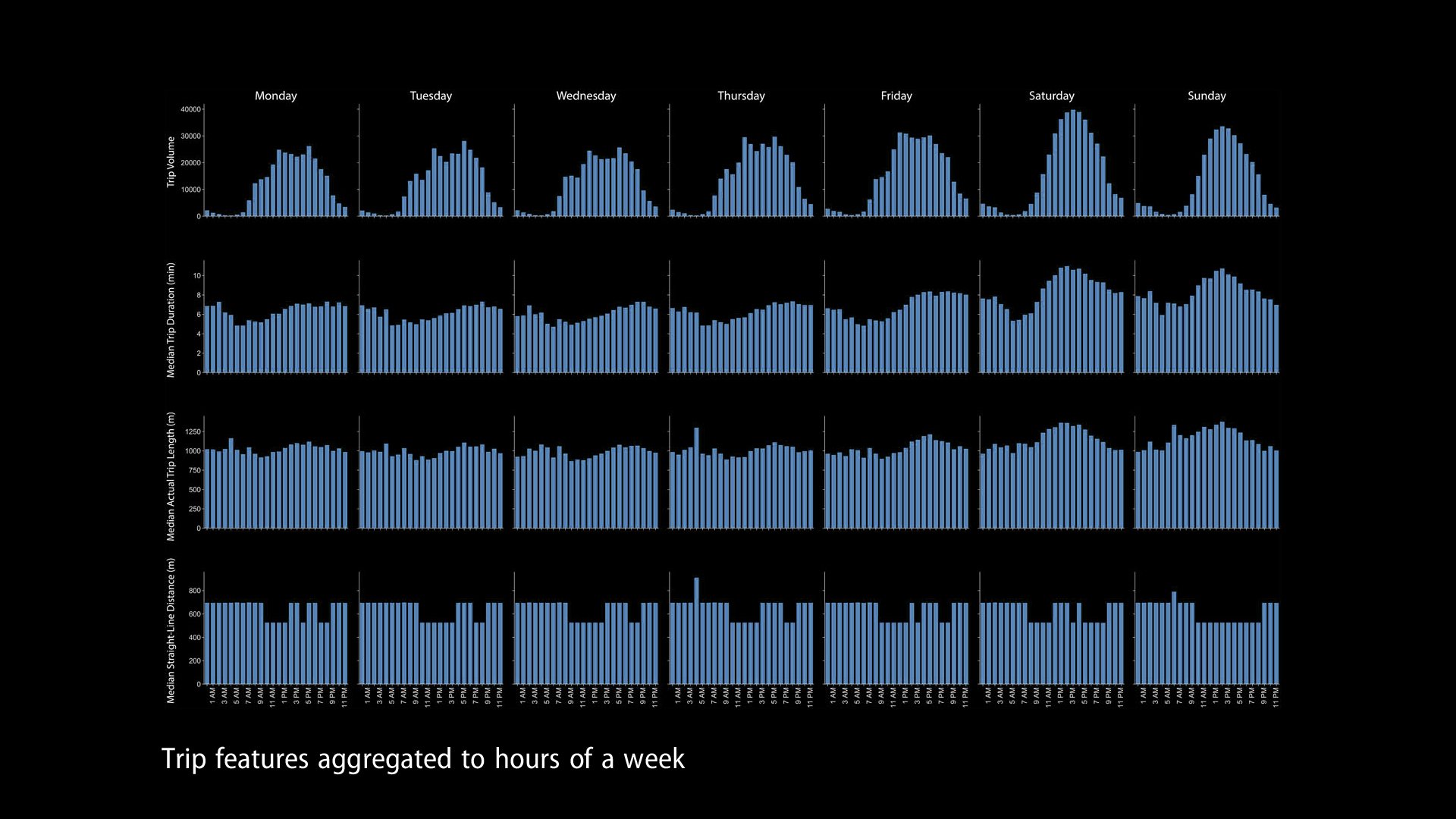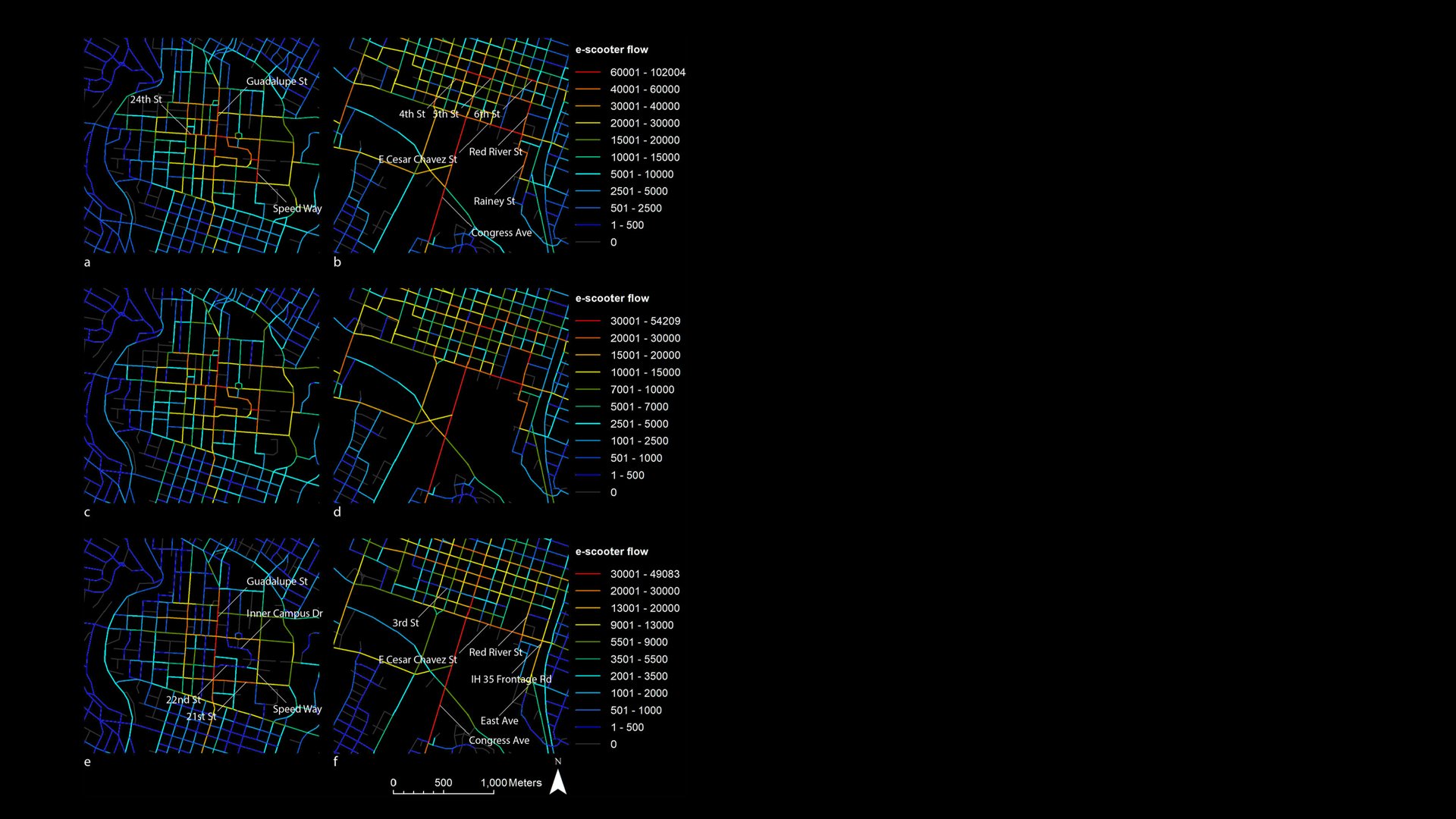Estimated e-scooter flow patterns in Downtown Austin and around the UT campus. (a) Escooter flows around the UT campus, derived from the all-inclusive, shortest-path model. (b) E-scooter flows in the downtown area, derived from the all-inclusive, shortest-path model. (c) E-scooter flows around the UT campus, derived from the selective, shortest-path model. (d) E-scooter flows in the downtown area, derived from the selective, shortest-path model. (e) E-scooter flows around the UT campus, derived from the selective, most-direct-path model. (f) E-scooter flows in the downtown area, derived from the selective, most-direct-path model.






